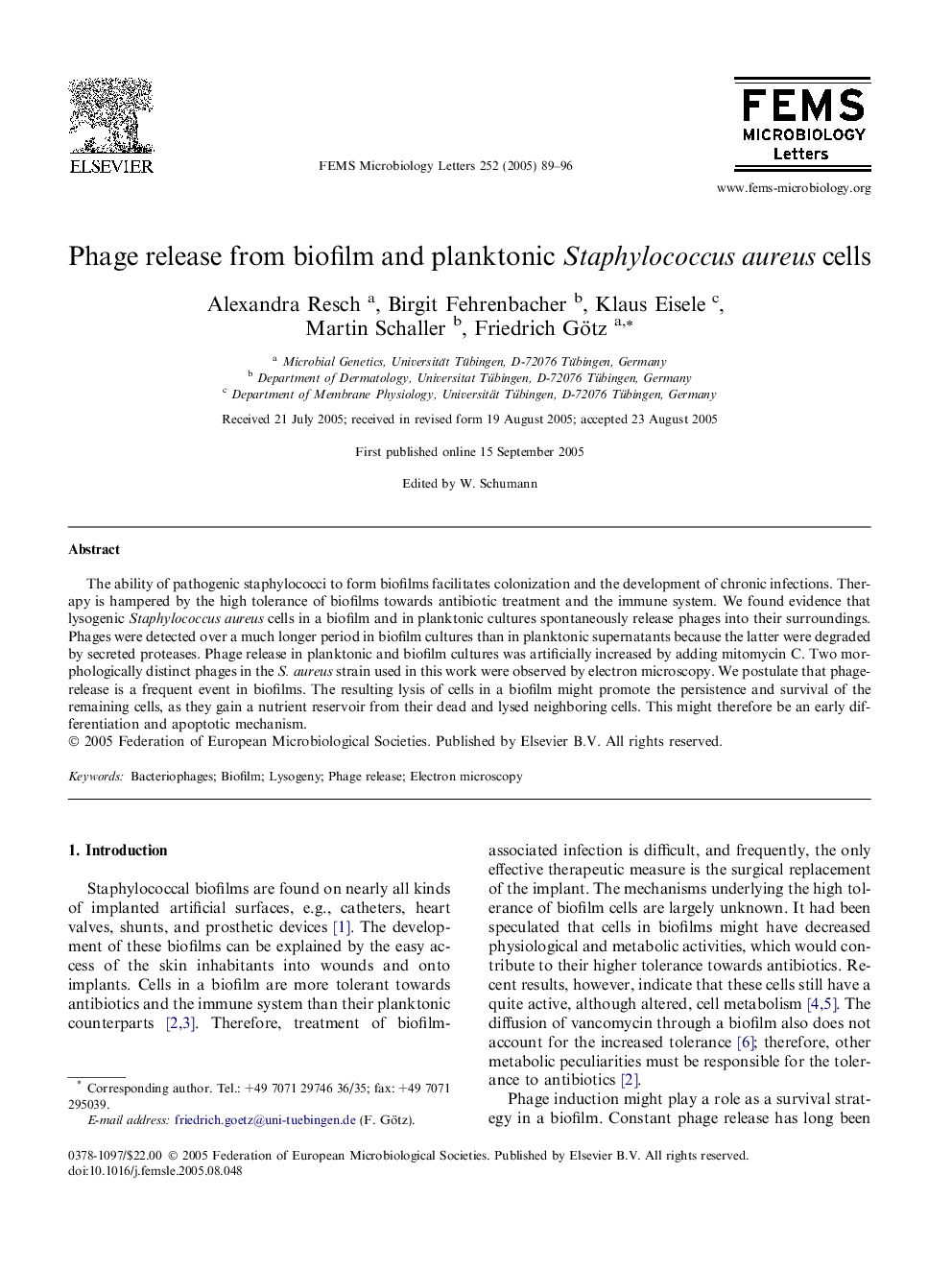| Article ID | Journal | Published Year | Pages | File Type |
|---|---|---|---|---|
| 9121323 | FEMS Microbiology Letters | 2005 | 8 Pages |
Abstract
The ability of pathogenic staphylococci to form biofilms facilitates colonization and the development of chronic infections. Therapy is hampered by the high tolerance of biofilms towards antibiotic treatment and the immune system. We found evidence that lysogenic Staphylococcus aureus cells in a biofilm and in planktonic cultures spontaneously release phages into their surroundings. Phages were detected over a much longer period in biofilm cultures than in planktonic supernatants because the latter were degraded by secreted proteases. Phage release in planktonic and biofilm cultures was artificially increased by adding mitomycin C. Two morphologically distinct phages in the S. aureus strain used in this work were observed by electron microscopy. We postulate that phage-release is a frequent event in biofilms. The resulting lysis of cells in a biofilm might promote the persistence and survival of the remaining cells, as they gain a nutrient reservoir from their dead and lysed neighboring cells. This might therefore be an early differentiation and apoptotic mechanism.
Related Topics
Life Sciences
Biochemistry, Genetics and Molecular Biology
Genetics
Authors
Alexandra Resch, Birgit Fehrenbacher, Klaus Eisele, Martin Schaller, Friedrich Götz,
